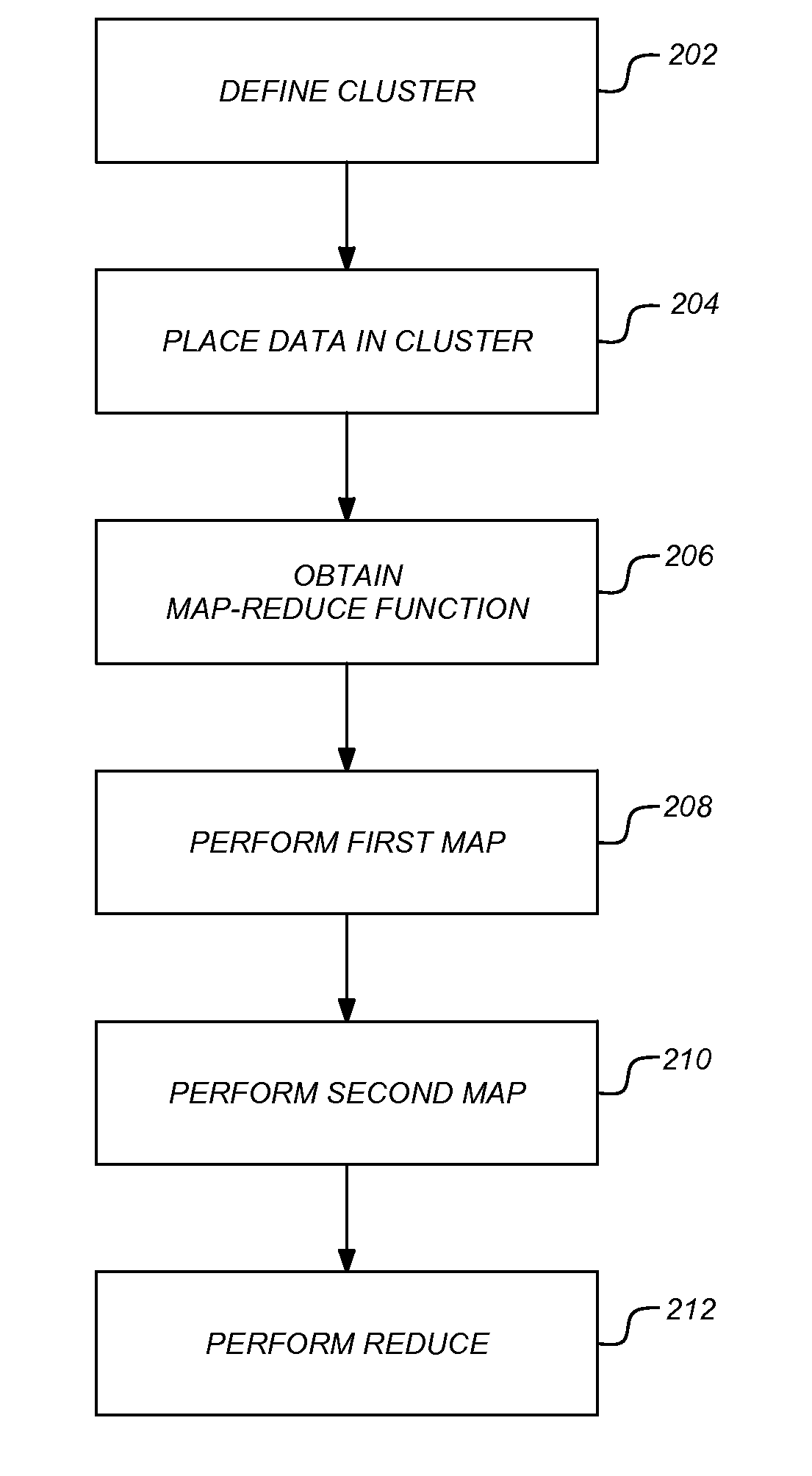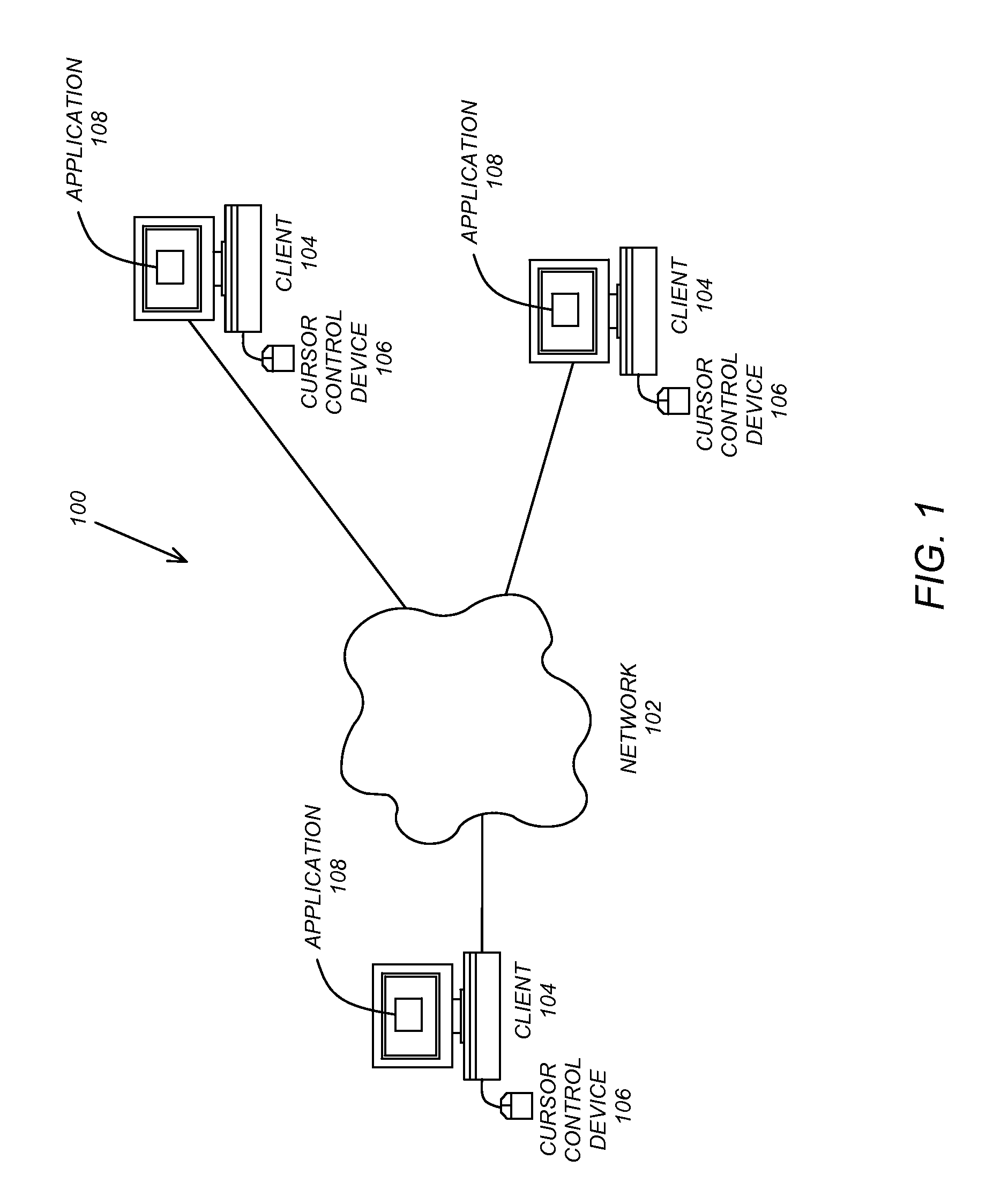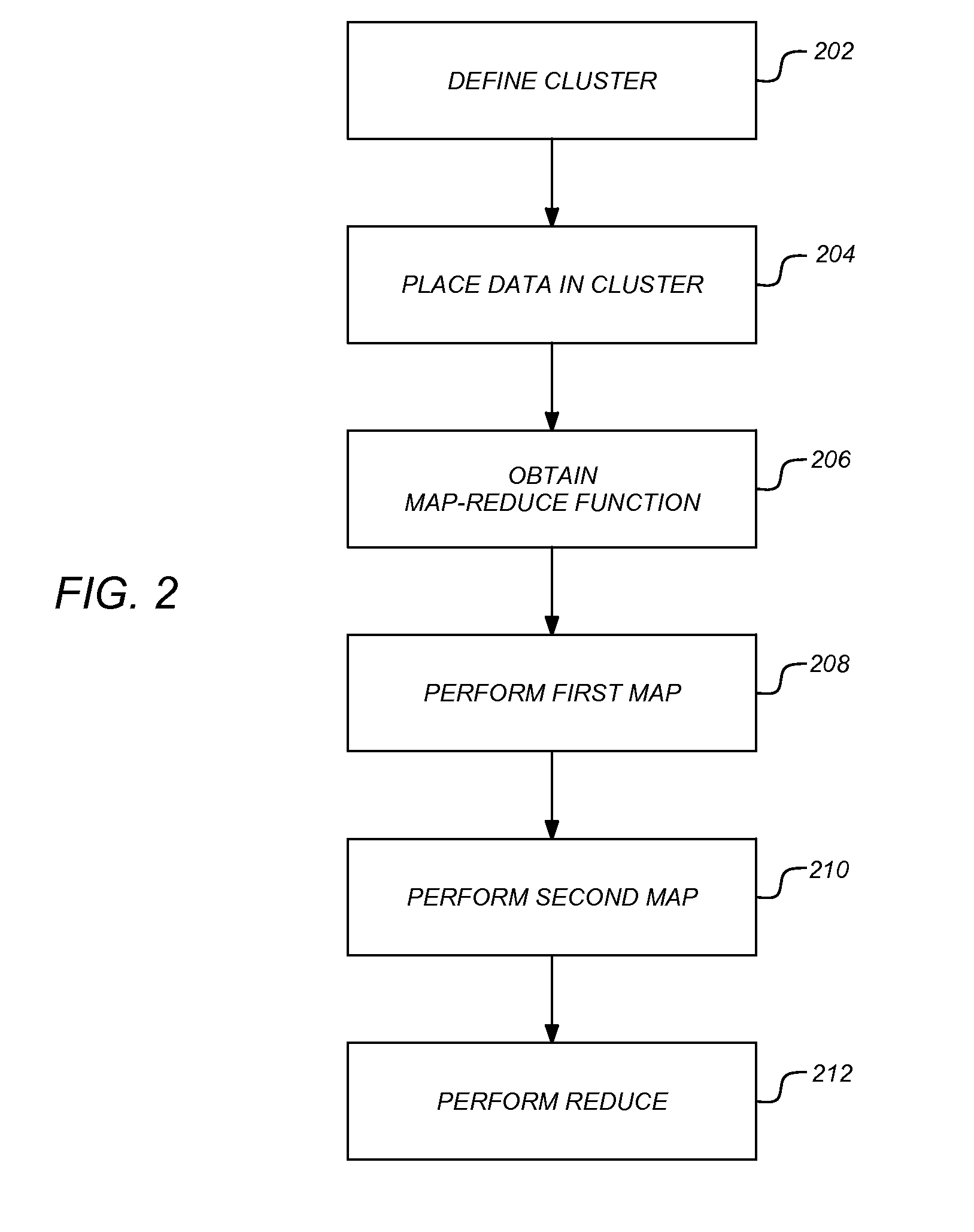Double map reduce distributed computing framework
a distributed computing and framework technology, applied in computing, instruments, electric digital data processing, etc., can solve problems such as skewing data overload, and achieve the effects of reducing the learning curve typically incurred, reducing the learning curve, and rapid creation of applications
- Summary
- Abstract
- Description
- Claims
- Application Information
AI Technical Summary
Benefits of technology
Problems solved by technology
Method used
Image
Examples
Embodiment Construction
[0027]In the following description, reference is made to the accompanying drawings which form a part hereof, and which is shown, by way of illustration, several embodiments of the present invention. It is understood that other embodiments may be utilized and structural changes may be made without departing from the scope of the present invention.
Overview
[0028]One or more embodiments of the invention provide the ability to install / configure a cluster of computers for a distributed computer network and to further utilize a map-reduce function in such a cluster.
[0029]The initial problem relates to determining and installing / recognizing all of the machines / computers in a cluster. The second issue is to place data into the cluster. The third issue is to perform and debug a map-reduce function on the data in the cluster. As described above, the prior art has various deficiencies in all three of these areas.
[0030]For example, with respect to the third issue, development processes in other ...
PUM
 Login to View More
Login to View More Abstract
Description
Claims
Application Information
 Login to View More
Login to View More - R&D
- Intellectual Property
- Life Sciences
- Materials
- Tech Scout
- Unparalleled Data Quality
- Higher Quality Content
- 60% Fewer Hallucinations
Browse by: Latest US Patents, China's latest patents, Technical Efficacy Thesaurus, Application Domain, Technology Topic, Popular Technical Reports.
© 2025 PatSnap. All rights reserved.Legal|Privacy policy|Modern Slavery Act Transparency Statement|Sitemap|About US| Contact US: help@patsnap.com



